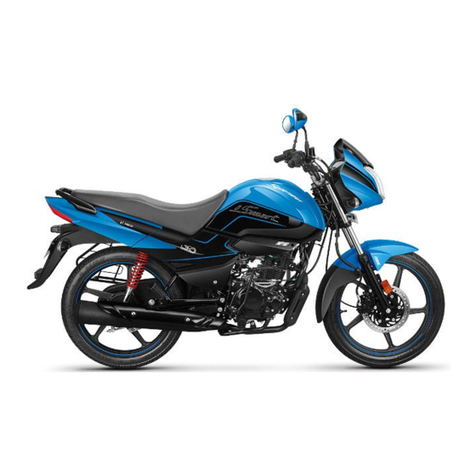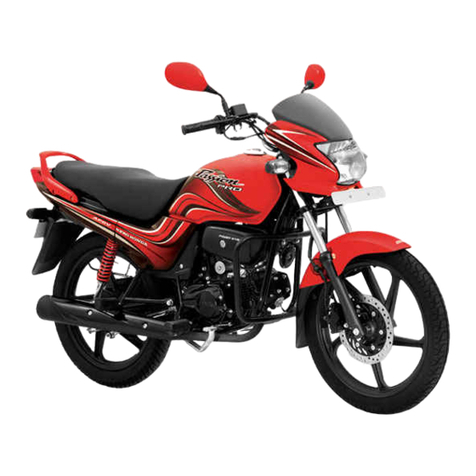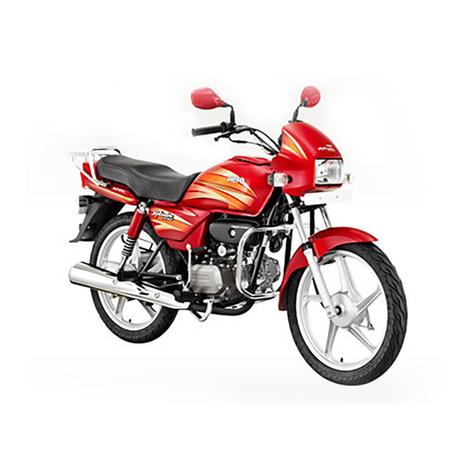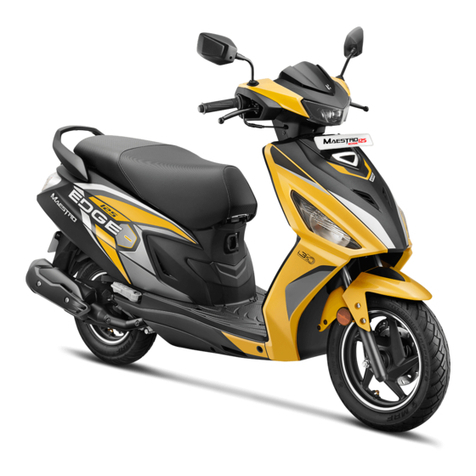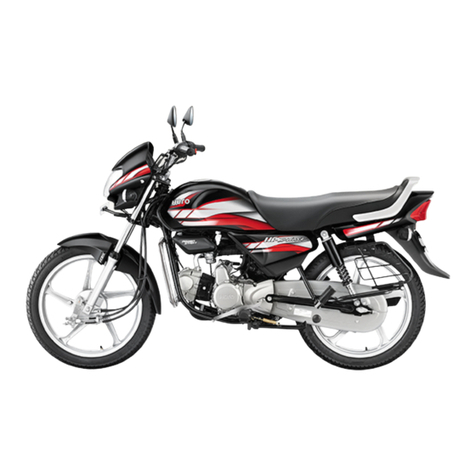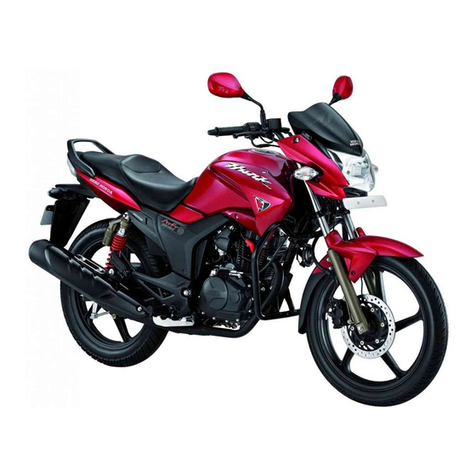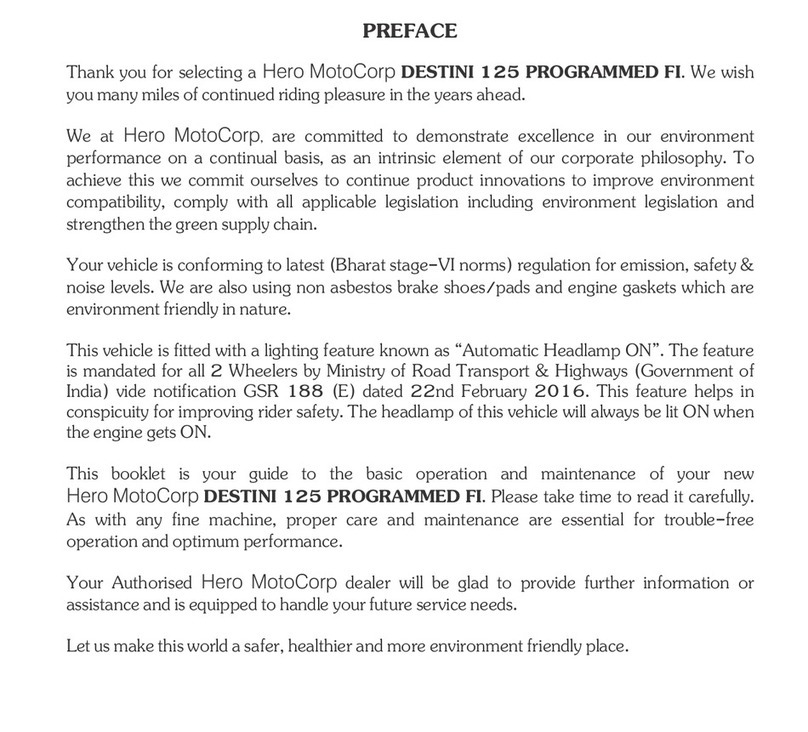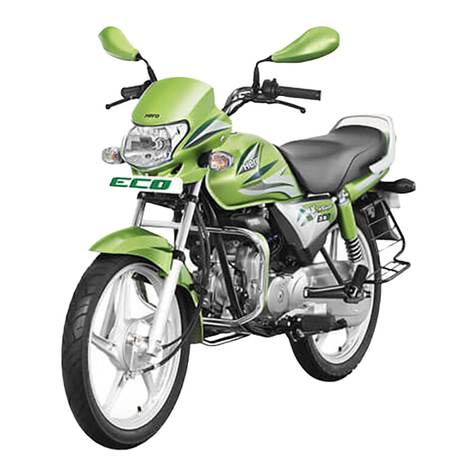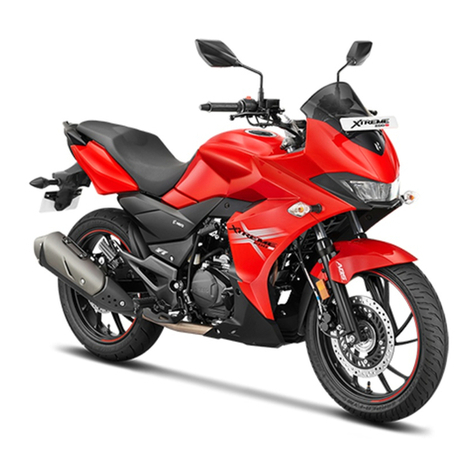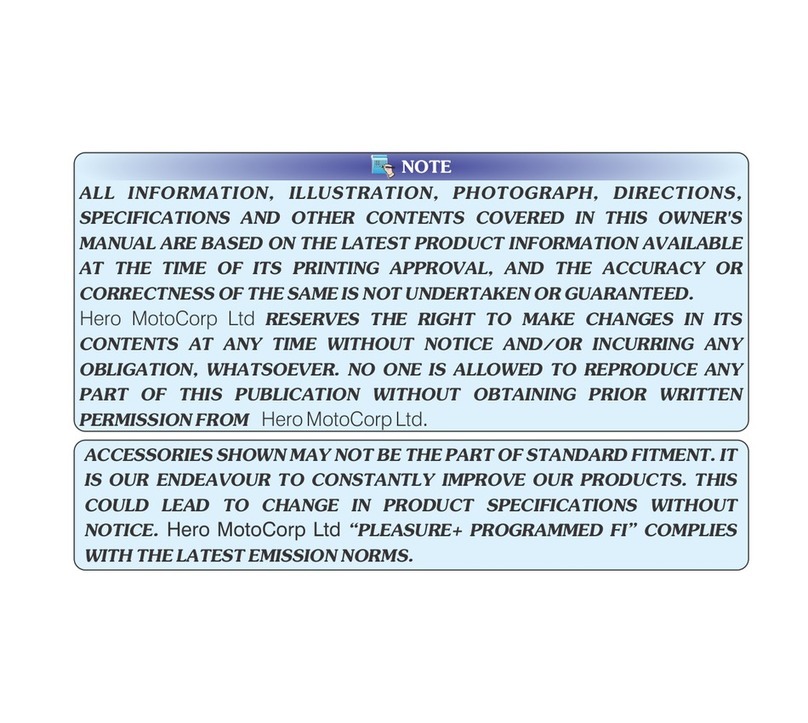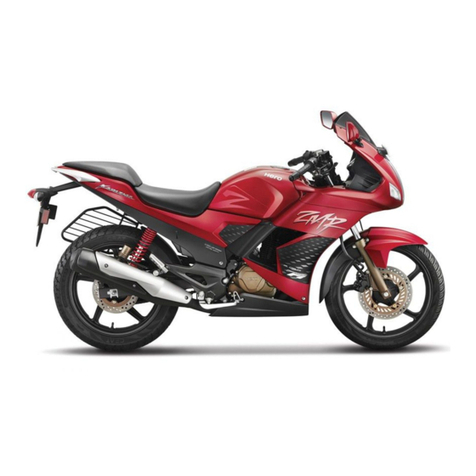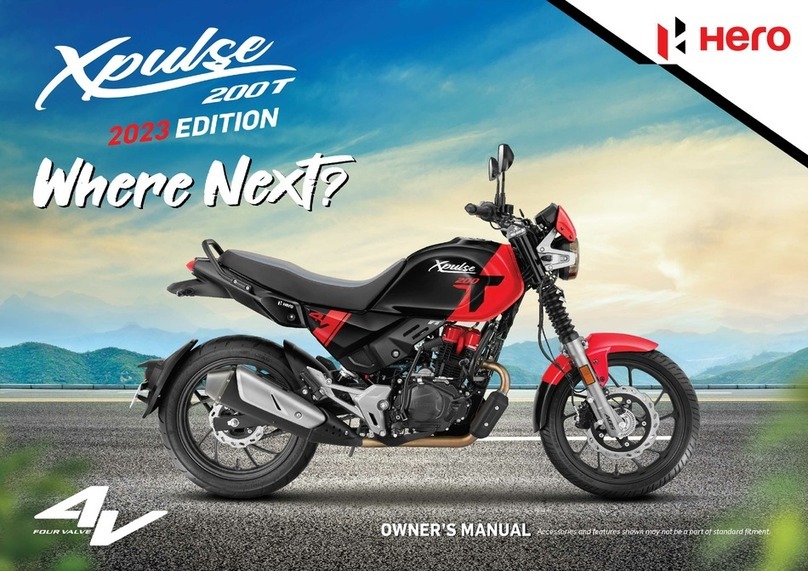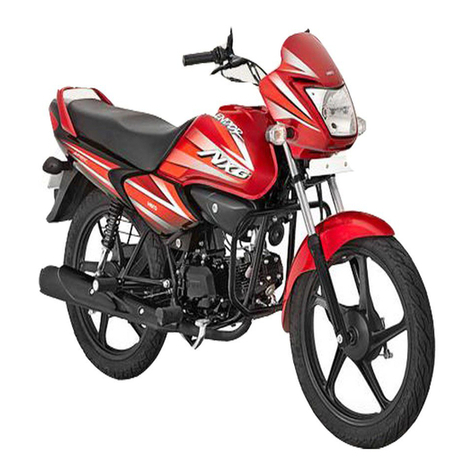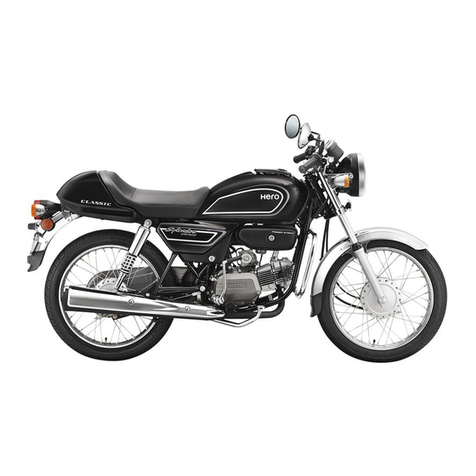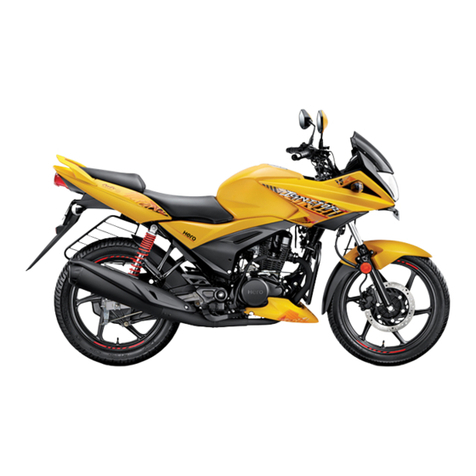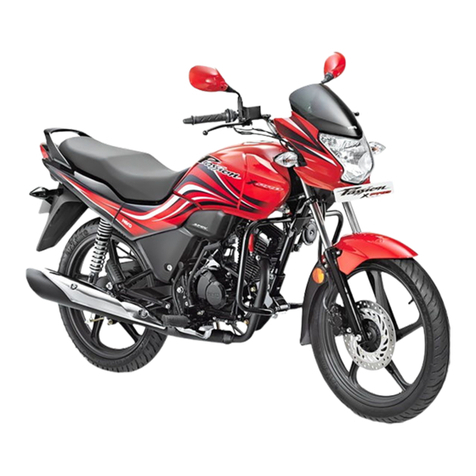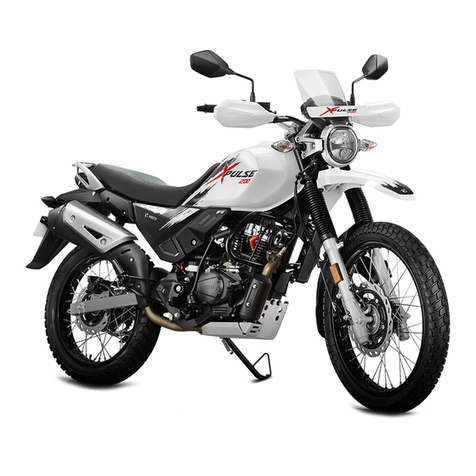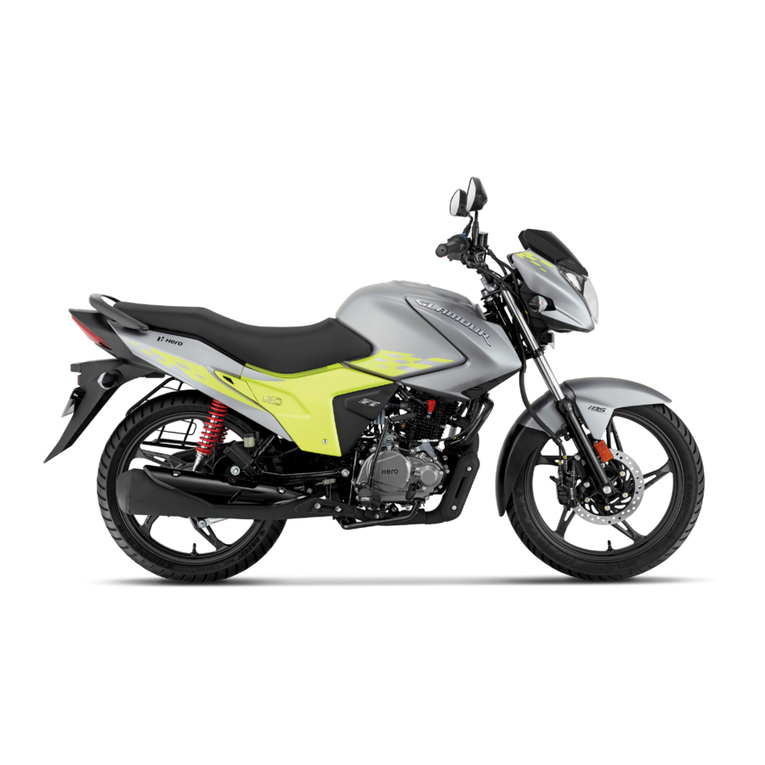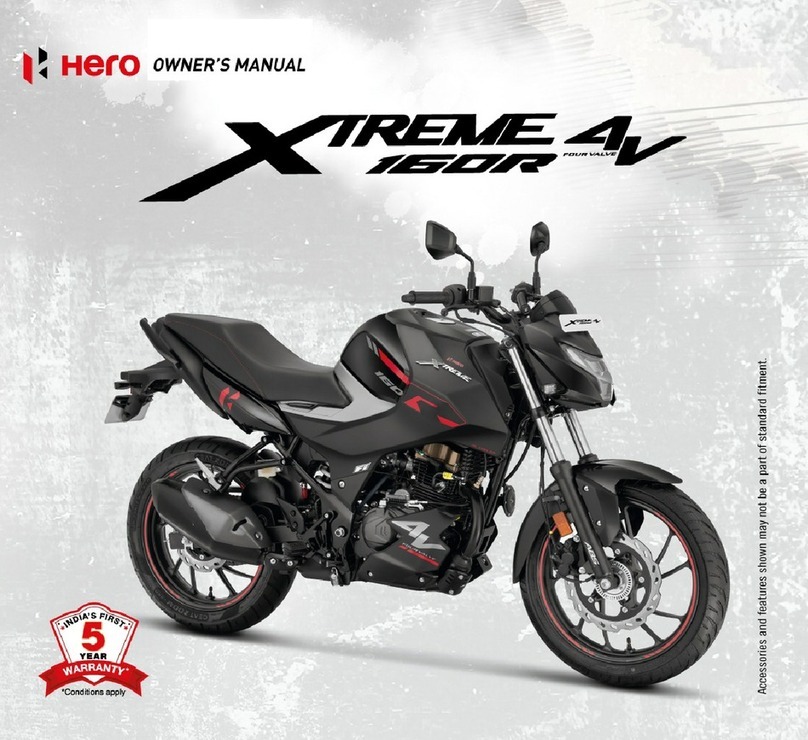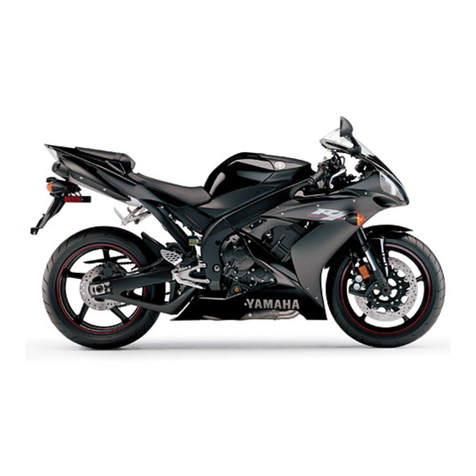
ACCESSORIES & MODIFICATIONS
Modifying your vehicle or using non-Hero
MotoCorp accessories can make your vehicle
unsafe. Before you consider making any
modifications or adding an accessory, be sure
to read the following information.
operation. Such changes could seriously
impair your vehicle's handling, stability and
braking, making it unsafe to ride. Removing or
modifying your lamps, mufflers, emission
control system or other equipment can also
make your vehicle illegal.
•Park your vehicle in a locked garage
whenever possible.
•Use an additional anti-theft device of good
quality.
ANTI-THEFT TIPS
•Never park your vehicle in an isolated area.
Park as far as possible in a designated area.
•Be sure the registration information for your
vehicle is accurate and correct.
•Always lock the steering and never leave the
key in the ignition switch. This sounds
simple but people do forget.
•Enter your name, address and phone
number in this Owner's Manual and keep it
in your vehicle at all times. Many times
stolen vehicles are identified by information
in the Owner's Manuals that are still with
them.
_______________________________________________________
PHONE NO : _____________________________________
_______________________________________________________
ADDRESS: _______________________________________
_______________________________________________________
NAME: _____________________________________________
We strongly advise you not to remove any
original equipment or modify your vehicle in
any way that would change its design or
•Do not pull a trailer or sidecar with your
vehicle. This vehicle was not designed for
these attachments, and their use can
seriously impair your vehicle's handling.
Modifications
•Make sure that the accessory does not
obscure any lamps, reduce ground
clearance, limit suspension travel or steering
travel, affect your riding position or interfere
with operating any controls.
•Be sure electrical equipment does not
exceed the 's electrical system vehicle
capacity (page 6). A blown fuse can cause a
loss of lights.
Accessories
•Follow all instructions in this owner's manual
regarding accessories and modifications.
•Improper accessories or modifications can
cause a crash in which you can be seriously
hurt or killed.
WARNING
!!
7
